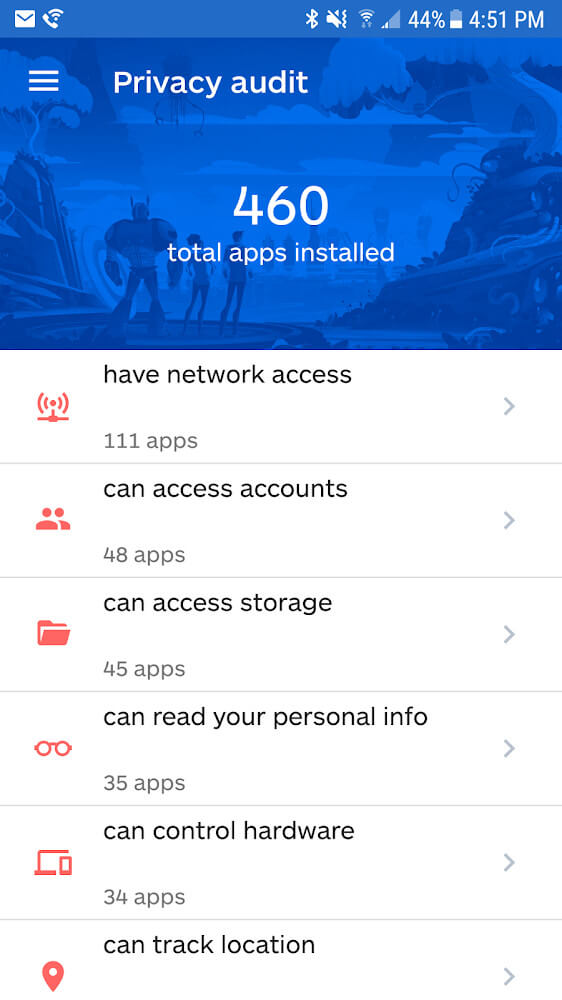

- #MALWAREBYTES 3.0 PREMIUM FOR ANDROID PHONES HOW TO#
- #MALWAREBYTES 3.0 PREMIUM FOR ANDROID PHONES SOFTWARE#
The company reported a growth of 10 million users in just one year, from 25 to 35 million active users at the time, and an increase in revenue by 1653% in 2014. The new office is more than twice the size of the former office. In June 2015, the company announced that it was moving its headquarters from 10 Almaden Boulevard in San Jose, California to a new 52,000 square feet (4,800 m 2) office space on the two top floors of the 12-story 3979 Freedom Circle in Santa Clara, California. By 2013 it claimed to have removed five billion malware threats from computers in its first five years. In 2014, Malwarebytes received $30 million in funding from Highland Capital, and by the following year it announced that it had treated 250 million computers worldwide, representing about 20–25% of working business computers. They expanded their malware removal and protection to the Android platform with the launch of Malwarebytes Anti-Malware Mobile, and launched a USB-based product called Malwarebytes Techbench aimed at helping technicians remove malware.
#MALWAREBYTES 3.0 PREMIUM FOR ANDROID PHONES SOFTWARE#
In 2013, Malwarebytes acquired ZeroVulnerabilityLabs, Inc., a security research and development company founded by Pedro Bustamante, which protects software applications from "known and zero-day exploits used by exploit kits, web-based vulnerability exploits and other corporate-targeted attacks". The following year, the company launched into the corporate market with an enterprise product aimed at desktop-based anti-malware detection and protection. That year, the company had claimed to have removed over five billion pieces of Malware in three years. In 2011, Malwarebytes acquired HPhosts, a website blacklisting company, which tracks blacklisted websites and ad servers, a necessary development to protect against new internet protocol addresses and web servers which distribute malware, and advise internet service providers to shut down those with malicious activity. Kleczynski and Harrison reportedly made $600,000 in their first year of selling the software, despite not having met personally at the time.

Marcus Chung, an e-commerce expert who formerly worked for GreenBorder, was hired as chief operating officer. Bruce became the VP of Research for Malwarebytes, and further hired Doug Swanson, with experience in freeware development to work for the new company. Kleczynski and Harrison formally launched Malwarebytes on Januwhile Kleczynski was studying computer science at the University of Illinois. RogueRemover proved instrumental in developing Malwarebytes Anti-Malware, and Kleczynski was able to set up a forum which enabled him to improve the software through feedback. In 2006, Kleczynski worked with a college roommate to produce a freely available program called "RogueRemover", a utility which specialized in fighting against a type of infection known as "rogues", which scam computer users into giving away their credit card information through fake anti-virus software. With one of the site's regulars, Bruce Harrison, Kleczynski wrote the inaugural version of the company's software. The company was unofficially founded after this, when Kleczynski conversed and became friends with several of the editors of the forum, who tempted him to buy an unused domain from them.
#MALWAREBYTES 3.0 PREMIUM FOR ANDROID PHONES HOW TO#
It was only after Kleczynski posted on the forum SpywareInfo, popular at the time, that he was able to learn how to remove the virus, which took three days. He later recalled "I've never been as angry as when I got my computer infected", and professed that his mother told him to fix it "under penalty of death". Kleczynski later discovered that, when his mother's computer became infected, neither McAfee nor Symantec would remove the malware from his system. He noticed that whenever infected computers arrived, the shop would typically reformat the computer entirely, rather than combat the virus, even if the infection was only minor. CEO and founder Marcin Kleczynski, originally from Poland, was still a teenager attending high school in Bensenville, Illinois at the time, and was working as a technician in a computer repair shop in Chicago.


 0 kommentar(er)
0 kommentar(er)
